On the night of August 29-30, 2023, the largest air strikes on seven regions of Russia were carried out at the same time. The Russian Defense Ministry said that 3 Ukrainian unmanned aerial vehicles (UAVs) were shot down in the Bryansk region and 2 in the Kaluga region, 2 were destroyed in Orion, 2 were shot down in the Ryazan region and 1 was intercepted over the Moscow suburbs while heading directly to the capital. Operations at Vnukovo, Domodedovo and Sheremetyevo airports were temporarily suspended. Sevastopol also suffered a major air strike.
However, Pskov was the area that suffered the most damage. Dozens of drones attacked the Pskov airport. Two Il-76 military transport planes caught fire and were severely damaged, and two more were slightly damaged. Pskov is a base for the airborne troops, Russia's elite special forces. According to the Russian Defense Ministry, the attack involved more than two dozen Ukrainian drones called Bober (beaver), which have a range of up to 1,000 kilometers.
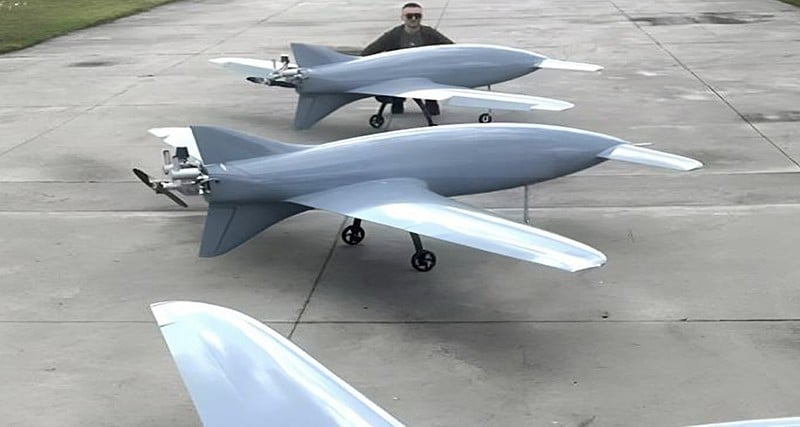 |
| Bober Drone |
This is truly an astonishing attack following the attack on the military airfield of the Russian Aerospace Forces' long-range aviation in Engels on December 26, 2022 and the attack on the Soltsy airfield in Nizhny Novgorod on August 19, 2023. It is really difficult for Russia to imagine that the target of the attack is the Pskov airport, because according to the Russian Ministry of Defense, to reach this area, the Ukrainian Beaver drone, if it took off from northern Ukraine, would have to travel a distance of up to 800 km through the territory of the Russian Federation and Belarus.
According to many Russian military experts, it is difficult for Ukraine to launch UAVs from Ukrainian territory, through Belarus and then into Russia to reach the northwestern part of this vast country without being shot down. According to them, these UAVs could have been launched from the Baltic international waters, but worse, they could have originated from the Baltic countries themselves (Estonia is 30 km from Pskov and Latvia is 50 km), NATO member countries.
Meanwhile, Ukraine said that the UAVs that fired at Pskov airport originated from within Russian territory. Russian military experts said that it was unlikely that dozens of UAVs launched from Russian territory could have bypassed Russian air defense systems. Russian President Dmitry Peskov's press secretary said the incident was very serious and that the Russian Defense Ministry was investigating and would take appropriate action.
This event shows that long-range UAVs are becoming more and more dangerous and are being used more and more. Here are the main tactical and technical features of the Bober drone that attacked the Pskov military airport:
- Length: ~2.5 m,
- Wingspan: ~3 m
- Weight: 150 kg
- Flight range: up to 1000 km
- Flight altitude: up to 1500 m
- Speed: up to 150 km/h
- Warhead weight: up to 20 kg
- Maximum flight time: ~ 7 hours
- Unit price: 100-110,000 USD/1 unit
Drones have increasingly greater flight ranges
Long-range drones will increasingly be used in conflicts, to strike deep into each other's territory. The article below introduces a way to increase the range of Russian UAVs. That is, the mother drone carries the baby drone, with the purpose of the baby UAV separating from the mother UAV and attacking the enemy when approaching the target. In which, the Lancet-3 suicide UAV is the type of child and the larger Russian UAV Orion is proposed to be used as a means of transport.
The Lancet-3 UAV is an advanced suicide UAV, widely used in the current conflict, while the Orion UAV is the only medium-altitude UAV in Russia with a fairly long flight time. Since time is one of the most important factors in combat, it would be very suitable to build a tomb to use as a UAV carrying UAV.
 |
| UAV Lancet-3. |
Lancet-3 weighs 12 kg (unit price 35,000 USD/unit), while the Orion-E UAV (export variant of Orion) can carry 250 kg to carry vehicles or weapons mounted on 3 pylons. When flying, Orion can fly continuously for 30 hours and reach a maximum flight speed of up to 200 km/h. If the weight of the control signal transponder and video signal from the launched suicide UAVs is added, it can be determined that an Orion UAV can carry 6–12 Lancet-3 suicide UAVs.
 |
| Drone "Orion" |
Due to the lack of a high-speed communications satellite network in Russia, the control of the Orion UAV and the Lancet-3 suicide UAV launched from it will have to be carried out via a transponder located on the "Orion" mother UAV in the air. This poses a risk of signal delays when controlling the aircraft at high speeds. Therefore, a possible solution could be to use the Tu-214 PU, Tu-214SUS airborne command post aircraft carrying both the control personnel, the Orion UAV and the Lancet-3 suicide UAV launched from it.
 |
| T-214SUS |
Even if the mothership and suicide UAVs are controlled from the aircraft command post, the capabilities of such a reconnaissance-strike complex will be very high. If Russia has a low-orbit satellite network with high-speed communication with low latency, as well as transport UAVs with increased flight range, their capabilities will be practically unlimited from a geographical point of view.
Tactics for using large UAVs to carry small UAVs
After receiving initial information about the possible location of potential targets, one or more Orion UAVs with Lancet-3 UAVs suspended under the wings will take off and move to an effective distance, taking into account the maximum possible flight time of the suicide UAV and the minimum risk to the mother UAV.
Depending on the type of air defense system the enemy has in a given area, a high-altitude or low-altitude flight scheme can be chosen. In the latter case, the flight path of the transport UAV must pass through a deserted area, preferably with dense vegetation. At the same time, the aircraft command post takes off and, after climbing, takes control of the mother UAV.
When receiving a signal from the command aircraft, the mother UAV will launch the suicide UAV, then it will continue to hover to ensure the transmission of communication signals. The suicide UAV will enter the area that is considered the target and search for them. After detecting the target, the suicide UAV will destroy it.
Perhaps the optimal solution would be to attack targets in pairs, with the second kamikaze UAV following the first kamikaze UAV’s attack, thereby both confirming the hit and reducing the possibility of repairing and restoring it with a second attack. For example, the first kamikaze UAV could be equipped with a shaped-charge warhead and the second could carry an incendiary warhead.
The distance between the mother UAV + the suicide UAV under the control of the command aircraft can exceed 300-350 km. When using the high-altitude flight mode of the mother UAV, the flight range of the suicide UAV will increase, which will increase the total flight range of the entire complex. It should be noted that the specified range is limited by the means of communication - the Orion UAV itself can cover much larger distances, which will allow flexible construction of flight paths to overcome the enemy's air defense system.
In addition to HIMARS rocket launchers and Patriot air defense systems, the Lancet-3's targets could be the Su-24 aircraft that Ukraine currently has, as well as the F-16 fighters when they are transferred to Ukraine.
From suicide UAV to reconnaissance UAV
There is another interesting way to attack high-priority targets by practically confirming their destruction. In this scenario, the Lancet-3 suicide drones would ditch their warheads in favor of larger batteries to increase range and flight time. That is, the Lancet would become a purely reconnaissance UAV. It is possible that a small warhead weighing a few hundred grams would be retained, mainly to prevent the UAV from being captured by the enemy after it runs out of battery power.
The number of Lancet reconnaissance UAVs on the Orion UAV can also be reduced to increase the operational range of the complex. In general, it is a matter of priority, if more reconnaissance UAVs, the coverage is wider, the operational range is less complicated or vice versa.
The tactics used are almost the same - after the UAV enters the launch area, the UAV reconnaissance aircraft will move to the area where the target is expected to be. Only after the targets are detected, their destruction is carried out not by suicide UAVs, but by long-range, high-speed weapons, such as the Iskander missile system, Onyx anti-ship missiles, and Kinzhal air-launched ballistic missiles.
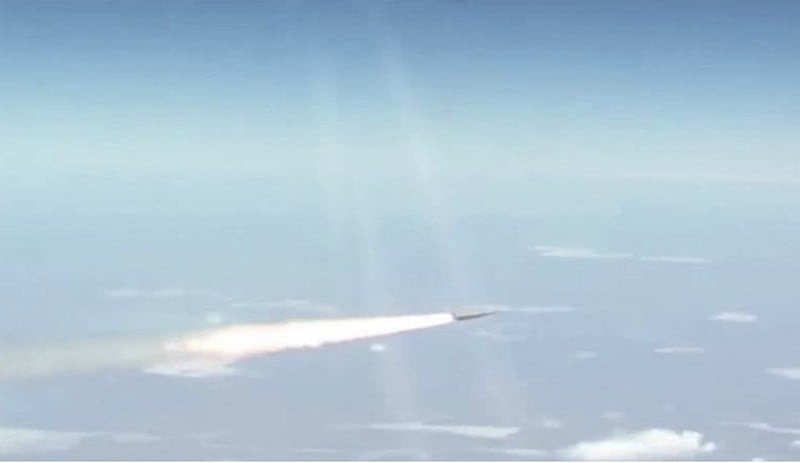 |
| Kinzhal missile on flight to destroy enemy target. |
In this scenario, reconnaissance UAVs not only accurately detect the location of the target, but also reliably confirm the fact of its destruction.
The flexible use of UAVs solves two most important tasks at once - causing significant damage to the enemy's troops, as well as confirming damage to discredit the combat capabilities and effectiveness of the latest weapons systems supplied by the sponsoring countries.
Source





![[Photo] Overcoming all difficulties, speeding up construction progress of Hoa Binh Hydropower Plant Expansion Project](https://vstatic.vietnam.vn/vietnam/resource/IMAGE/2025/4/12/bff04b551e98484c84d74c8faa3526e0)

![[Photo] Closing of the 11th Conference of the 13th Central Committee of the Communist Party of Vietnam](https://vstatic.vietnam.vn/vietnam/resource/IMAGE/2025/4/12/114b57fe6e9b4814a5ddfacf6dfe5b7f)
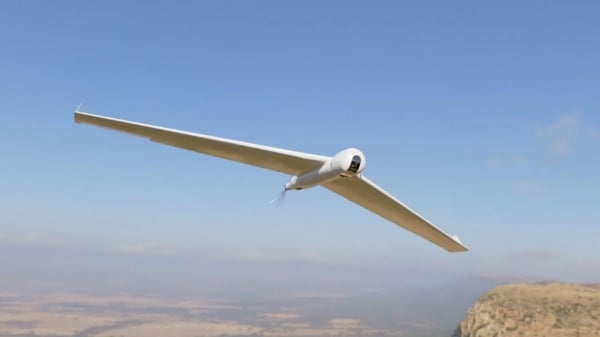



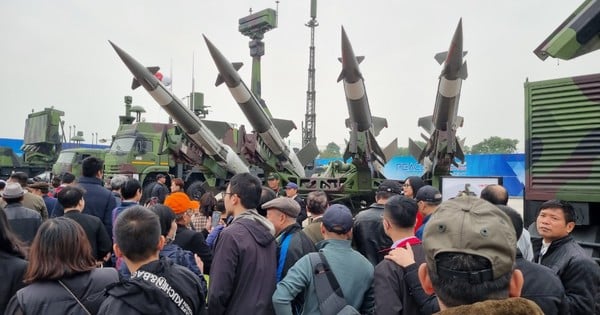
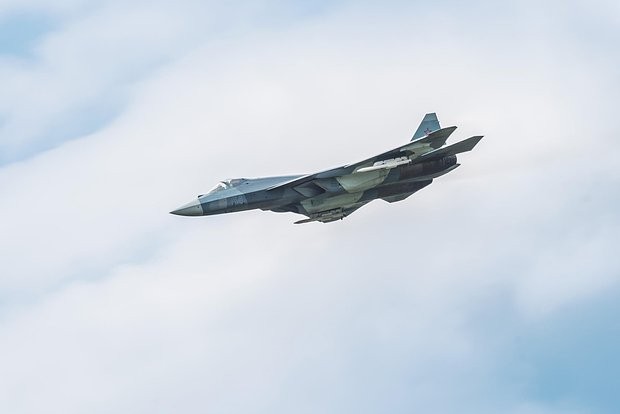


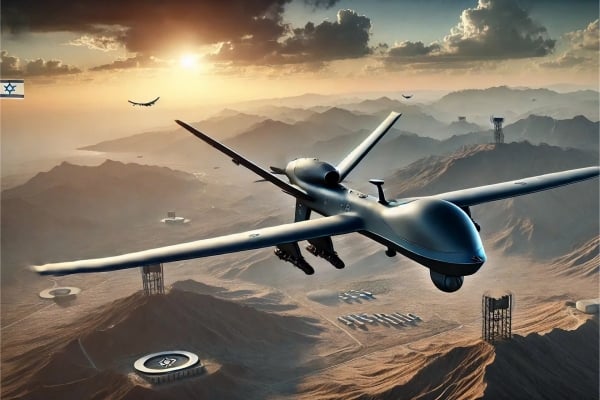















































































Comment (0)